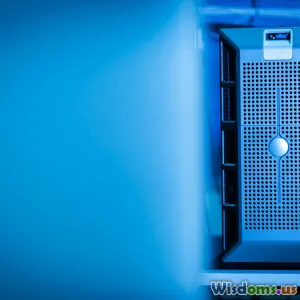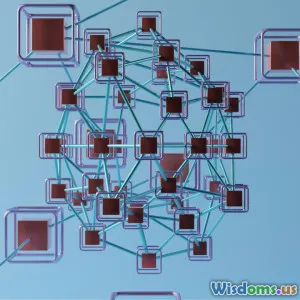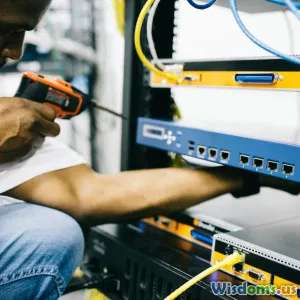
Cloud vs Edge Computing Which Approach Will Dominate Industry
8 min read Explore how cloud and edge computing compete to shape the future of industry with real-world insights and critical analysis. (0 Reviews)
Cloud vs Edge Computing: Which Approach Will Dominate Industry?
In the ever-evolving landscape of technology, two computing paradigms are at the forefront of industrial transformation: cloud computing and edge computing. Organizations worldwide are navigating the complex decision of which approach will drive efficiency, innovation, and sustainability in their operations. This disputation isn’t just theoretical—it impacts how companies process data, deploy applications, and reimagine services to stay competitive.
Introduction
Imagine a factory floor dotted with sensors monitoring production lines, autonomous vehicles navigating busy streets, or even remote health devices tracking patient vitals. Each scenario demands processing vast amounts of data, often in real time. Historically, the cloud—characterized by centralized data centers and large-scale computing resources—has been the go-to solution. However, the rise of smart devices and latency-sensitive applications has fueled the emergence of edge computing, which processes data closer to the source.
This article dives deep into the nuances of cloud and edge computing, dissecting their strengths, limitations, and real-world applications. By the end, you'll gain a clearer perspective on which technology might dominate industry sectors or whether coexistence is the most pragmatic future.
Understanding Cloud Computing
Core Concepts and Advantages
Cloud computing delivers on-demand computing resources like servers, storage, and applications via the internet. Giants such as Amazon Web Services (AWS), Microsoft Azure, and Google Cloud Platform dominate this space by providing scalable infrastructure able to handle intense workloads.
Key advantages include:
- Scalability: Organizations can dynamically adjust computing resources, accommodating demand spikes without upfront investment in hardware.
- Cost Efficiency: The pay-as-you-go model reduces capital expenditure and operational costs.
- Accessibility: Centralized data allows easy access and collaboration across geographies.
For example, Netflix leverages cloud platforms to stream content seamlessly to millions worldwide, adjusting computational resources in real time depending on global demand.
Limitations
While cloud computing offers many perks, it isn’t a silver bullet:
- Latency Issues: Transmitting data from endpoints to centralized cloud servers introduces delays.
- Data Privacy and Security: Transferring sensitive data across the internet poses inherent risks.
- Bandwidth Dependency: Heavy data streams can strain networks, increasing costs and reducing efficiency.
In industrial automation, real-time decision-making is crucial; relying solely on cloud may cause lag detrimental to operations.
The Emergence of Edge Computing
Defining Edge Computing
Edge computing shifts data processing from centralized clouds to decentralized nodes located closer to where data is generated—whether that’s sensors on equipment, local gateways, or even mobile devices.
The Industrial Internet Consortium’s 2017 report identifies edge computing as pivotal for environments requiring real-time processing and low latency.
Benefits and Use Cases
- Reduced Latency: By performing computation at or near the source, critical applications such as autonomous vehicles or smart grids achieve near-instant response times.
- Bandwidth Optimization: By processing data locally, only relevant insights or summaries are sent to the cloud, saving network capacity.
- Enhanced Security: Keeping data on premises or at local nodes reduces exposure to external threats.
An iconic example is Tesla’s autonomous cars—utilizing onboard edge computation enables instant reaction to road events without waiting for cloud commands.
Challenges
Edge computing is not without hurdles:
- Infrastructure Costs: Deploying and maintaining distributed edge nodes can be capital-intensive.
- Management Complexity: Managing numerous edge devices with varied configurations requires sophisticated orchestration tools.
- Limited Computing Power: Edge devices often lack the vast resources cloud data centers offer.
Hybrid Approach: The Best of Both Worlds
Rather than positioning cloud and edge computing as mutually exclusive, many industries embrace hybrid architectures.
For instance, predictive maintenance in manufacturing collects data locally at edge devices to trigger immediate alerts but uploads historical trends to the cloud for deeper analytics and machine learning model training.
AWS’s Greengrass and Microsoft Azure IoT Edge are platforms facilitating such integrations, allowing seamless transitions between edge and cloud based on workload needs.
Which Approach Will Dominate Industry?
Industry-Specific Insights
-
Healthcare: Edge computing plays a vital role in wearable devices and telemedicine, offering immediate data processing critical to patient safety. Simultaneously, cloud facilitates large-scale medical data storage and AI-based diagnostics.
-
Manufacturing: Smart factories leverage edge to respond to equipment anomalies in milliseconds while relying on cloud for strategic data analysis.
-
Retail: Edge supports real-time inventory management and personalized in-store customer experiences, with cloud handling sales analytics and online platforms.
Market Trends and Predictions
According to Gartner's forecast, edge computing is expected to process 75% of data by 2025, up from 10% in 2019, illustrating rapid adoption driven by IoT proliferation.
However, cloud computing remains the backbone for large-scale data storage, advanced AI services, and cost-effective scalability.
Expert Perspectives
Dr. Matt Trifiro, Chair of the Industrial Internet Consortium, states: "Edge computing isn’t about replacing the cloud; it’s about complementing it to deliver distributed intelligence exactly where it’s needed."
Conclusion
The battle of cloud vs edge computing is less a competition and more a collaboration that offers diverse solutions tailored to industry needs. Rather than a single dominance, a hybrid ecosystem is emerging—one where latency-sensitive, security-critical tasks occur at the edge, while massive data analysis, archiving, and AI training happen in the cloud.
Businesses aiming to leverage these technologies should evaluate data criticality, latency requirements, and cost factors to architect systems blending cloud's power with edge’s immediacy.
In sum, the future industrial computing landscape is not cloud or edge—it’s cloud and edge, co-evolving to power the next wave of innovation.
References
- Gartner, "Predicts 2020: Edge Computing Boosts Real-time Interaction and Data Privacy," 2020.
- Industrial Internet Consortium, "Edge Computing for Smart Connected Systems," 2017.
- AWS, "AWS Greengrass," accessed 2024.
- Tesla Autonomy and Edge Computing, Tesla Annual Report, 2023.
This article is intended to inform executives, developers, and technology enthusiasts about strategic decisions related to cloud and edge computing in the modern industrial context.
Rate the Post
User Reviews
Popular Posts




















